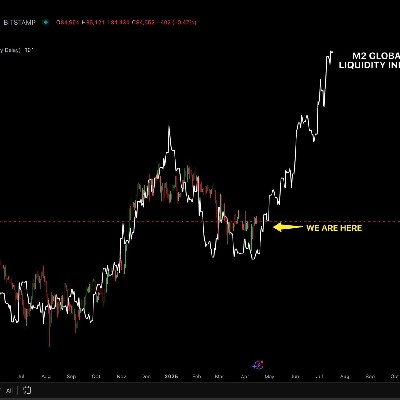


Arweave 價格AR
您今天對 Arweave 感覺如何?
Arweave (AR) 簡介
什麼是 Arweave?
Arweave 是一個總部位於倫敦的去中心化儲存網路,由 Sam Williams 和 William Jones 於 2017 年 7 月創立。此突破性平台旨在徹底改變我們對網際網路上儲存數據的看法,致力於消除目前中心化系統中普遍存在的數據遺失和竄改現象。Arweave 利用稱為 Blockweave 的獨特協議,促進安全和永久的全球資訊儲存。該協議不僅最大程度地減少了開發人員的限制,還設想了一個更具彈性和包容性的網際網路。
由於駭客攻擊、用戶疏忽和連結失效等各種原因,網路上每天都有大量數據遺失,而 Arweave 網路是防止這類事件發生的堡壘。透過為鏈上儲存提供經濟實惠且可擴展的解決方案,Arweave 確保用戶可以無限期地在網站上保存資訊。其點對點協議將硬碟上擁有大量儲存空間的用戶連結到 Arweave 網路,獎勵他們提供的儲存服務,進而培育更具成本效益的數據儲存生態系統。
相關頁面
白皮書:https://www.arweave.org/yellow-paper.pdf
Arweave 是如何運作的?
Arweave 的核心在於 Blockweave 技術,它與許多其他加密貨幣中常見的傳統區塊鏈結構不同。Blockweave 不僅儲存交易資訊,還將數據資訊壓縮在每個區塊上,打造更全面、更安全的數據儲存解決方案。這項技術搭配了一種名為 SPoRA(自組織權限證明)的新穎共識機制,鼓勵網路中的節點盡可能多儲存數據以獲得區塊獎勵。
此外,Arweave 引入了永存網路(permaweb)的概念,即一個建立在 Arweave 區塊鏈之上的去中心化網路。該層容納了在 Arweave 平台上開發的所有去中心化應用程式(DApp),透過 HTTP 提供與全球資訊網(www)的順暢互動。雖然後端操作複雜,但 Arweave 承諾提供用戶友善的前端體驗,透過瀏覽器擴充功能,簡化在區塊鏈上儲存網站的過程。這種不可篡改性和以用戶為中心的方法,使 Arweave 成為希望建立高效 DApp 的開發人員的首選平台。
什麼是 AR 代幣?
AR 代幣是 Arweave 區塊鏈的原生加密貨幣,在生態系統中發揮關鍵作用。2018 年 6 月 Arweave 主網推出期間,總共鑄造了超過 5,500 萬枚代幣,最大供應量為 6,600 萬枚。這些代幣可用於網路中的各種操作中,包括支付交易費用、與 DApp 互動以及激勵儲存服務提供商。隨著網路的發展,AR 代幣將變得通縮,有望在去中心化儲存空間中實現潛在的增長和功能性。
Arweave 對金融的影響
Arweave 證明了區塊鏈技術在金融領域的變革力量。透過為大數據公司提供去中心化的替代方案,它有望在數據儲存市場上提供更具競爭力和更高效的定價結構。此外,AR 代幣在 Arweave 生態系統中具有強大的功能性和穩定的歷史價格走勢,成為了一個有潛力的投資途徑。隨著去中心化儲存系統在產業中逐漸受到重視,Arweave 憑藉其創新技術和合作夥伴關係,已準備好在金融領域佔據一席之地,並有可能徹底改變 21 世紀的數據管理和儲存。
Arweave 的價格是由什麼決定?
了解 AR 代幣價格的波動並評估 Arweave(AR)價值,需要對各種因素進行深入分析。投資者和愛好者敏銳地觀察每日價格趨勢,利用 Arweave(AR)價值分析工具來預測這一有潛力的區塊鏈解決方案的潛在走勢。
Arweave 代幣的市值提供了對其在加密貨幣市場中的地位的重要參考。值得注意的是,AR 代幣的當日價格反映了更廣泛的市場趨勢、Arweave 平台的進步以及加密貨幣領域的整體情緒。
如果您想知道如何投資 AR 代幣,或將其納入您的投資組合,則必須密切關注 Arweave 代幣價格趨勢。此外,考慮 AR 代幣歷史價格數據可以全面了解代幣的長期表現,有助於做出明智的投資決策。
專家和分析師經常發表預測,包括 2023 年 Arweave(AR)價格預測,會根據目前市場動態和近期價格走勢提供有價值的見解。雖然這些預測並非萬無一失,但對於希望評估 AR 代幣未來潛力的專家和新手來說,它們都是寶貴的資源。
展望未來,許多業界人士皆看好 Arweave(AR)的價格潛力。該平台以其去中心化和永久數據儲存解決方案而聞名,準備在區塊鏈領域建立一個重要的利基市場。鑑於 Arweave 在去中心化網路領域中採用的創新數據管理方法,有意擴大投資組合的投資者可能會認為它是一個有價值的競爭者。
結論
總之,作為區塊鏈和加密貨幣領域的一股變革力量,Arweave 為當今網路中普遍存在的數據遺失和竄改問題提供了一種新穎的解決方案。該平台利用其獨特的 Blockweave 技術和 SPoRA 共識機制,承諾提供去中心化、安全和永久的全球數據儲存解決方案。AR 代幣是 Arweave 生態系統的核心,不僅促進了各種鏈上操作,而且還是一個有潛力的投資機會,反映了該平台從根本上重塑數據儲存市場動態的潛力。隨著投資者敏銳地追蹤 AR 代幣的市場趨勢和預測,Arweave 將繼續在金融領域開拓其重要的利基市場,代表著 21 世紀去中心化數據管理和儲存的靈活創新途徑。
Arweave 的 AI 分析報告
今日Arweave即時價格TWD
Arweave價格歷史(TWD)
 最低價
最低價 最高價
最高價 
Arweave的最高價格是多少?
Arweave的最低價格是多少?
Arweave價格預測
什麼時候是購買 AR 的好時機? 我現在應該買入還是賣出 AR?
AR 在 2026 的價格是多少?
AR 在 2031 的價格是多少?
常見問題
什麼因素影響 Arweave 的價格?
我該如何購買Arweave?
Arweave是一個好的投資嗎?
Arweave的未來價格預測是什麼?
Arweave的價格能否達到1000美元?
目前 Arweave 價格變動的原因是什麼?
Arweave的 Storage 解決方案如何影響其價格?
我該如何在購買後安全存儲Arweave?
是否有任何即將出現的開發可能影響Arweave的價格?
去中心化存儲的市場趨勢如何影響 Arweave 的價值?
Arweave 的目前價格是多少?
Arweave 的 24 小時交易量是多少?
Arweave 的歷史最高價是多少?
我可以在 Bitget 上購買 Arweave 嗎?
我可以透過投資 Arweave 獲得穩定的收入嗎?
我在哪裡能以最低的費用購買 Arweave?
Arweave 資訊
Arweave 動態
Mind Network(FHE):Web3 時代的數據安全先鋒
RedStone(RED):Web3 世界中可靠、可擴展數據的關鍵
REVOX(REX):利用自治 AI 代理重新定義去中心化應用程式
Solchat(CHAT):Solana 區塊鏈上的革命性通訊協議
Solana 2023 年 12 月飆升現象剖析及持續成長的潛力
SOLS 代幣:開創 Solana 副本新時代
什麼是比特幣 Ordinals?關於比特幣 NFT,您需要知道的一切
Arweave行情
Arweave持幣分布集中度
Arweave地址持有時長分布

全球Arweave價格
- 1
- 2
- 3
- 4
- 5
如何購買Arweave(AR)

建立您的免費 Bitget 帳戶

認證您的帳戶

將 Arweave 兌換為 AR
交易 AR 永續合約
在 Bitget 上註冊並購買 USDT 或 AR 後,您可以開始交易衍生品,包括 AR 合約和槓桿交易,增加收益。
AR 的目前價格為 NT$203.27,24 小時價格變化為 -3.19%。交易者可透過做多或做空 AR 合約獲利。
購買其他幣種
您可以在哪裡購買Arweave(AR)?
影片部分 - 快速認證、快速交易

Arweave評級
Bitget 觀點



相關資產
關於Arweave的更多資訊

































Arweave社群媒體數據
過去 24 小時,Arweave社群媒體情緒分數是 3.5,社群媒體上對Arweave價格走勢偏向 看漲。Arweave社群媒體得分是 498,280,在所有加密貨幣中排名第 172。
根據 LunarCrush 統計,過去 24 小時,社群媒體共提及加密貨幣 1,058,120 次,其中Arweave被提及次數佔比 0.02%,在所有加密貨幣中排名第 135。
過去 24 小時,共有 832 個獨立用戶談論了Arweave,總共提及Arweave 246 次,然而,與前一天相比,獨立用戶數 增加 了 2%,總提及次數減少。
Twitter 上,過去 24 小時共有 11 篇推文提及Arweave,其中 36% 看漲Arweave,0% 篇推文看跌Arweave,而 64% 則對Arweave保持中立。
在 Reddit 上,最近 24 小時共有 35 篇貼文提到了Arweave,相比之前 24 小時總提及次數 增加 了 6%。
社群媒體資訊概況
3.5